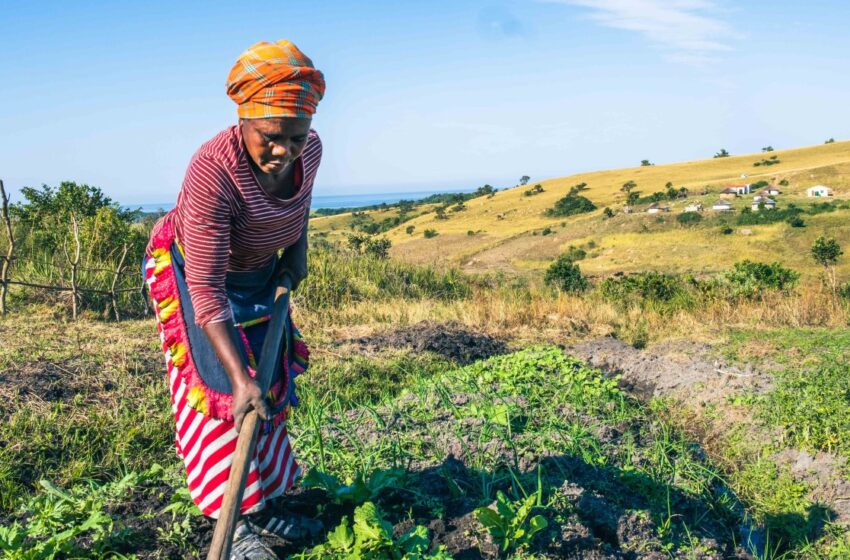Cold fronts disrupt crops—here’s how SA farmers can adapt

Cold fronts disrupt crops—here’s how SA farmers can adapt
As cold fronts sweep across South Africa with increasing intensity, farmers—especially those in vulnerable, rural communities—are facing mounting challenges. From frost-bitten crops in Limpopo to waterlogged fields in the Eastern Cape, the impact of sudden temperature drops, heavy rain, and strong winds is becoming a serious threat to agricultural productivity and food security. With the South African Weather Service (SAWS) forecasting more unpredictable weather events, it’s crucial for farmers to adopt climate-smart strategies that help them prepare, adapt, and recover. This guide outlines practical, low-cost methods farmers can use to protect their crops, livestock, and livelihoods during the coldest and most unpredictable periods of the season.
How Farmers Can Weather Cold Fronts in South Africa
With cold fronts increasingly disrupting South Africa’s agricultural calendar—bringing heavy rain, frost, strong winds, and even snow—farmers are under growing pressure to adapt. These weather events, intensified by climate change, pose serious threats to crop yields, livestock health, and farm infrastructure.
But resilience is possible. With a mix of traditional wisdom, climate-smart practices, and early warning systems, farmers can reduce losses and bounce back stronger from severe weather.
Use Climate-Resilient Crop Varieties and Smart Planting
One of the most effective ways to adapt to unpredictable cold snaps is by planting drought- and frost-tolerant crops. Varieties that mature faster or resist temperature shocks are now available through seed banks and agricultural extension programs.
Adjusting planting times is also key. Farmers should plan around seasonal forecasts to avoid peak cold periods during germination and early growth phases.
Protect Crops from Frost and Excess Rain
Frost can destroy young crops overnight. Farmers are encouraged to use row covers, frost cloths, or plastic tunnels to shield plants—especially at night when temperatures drop sharply.
In rain-affected zones, installing or improving field drainage systems can prevent root rot and waterlogging. Mulching can also help regulate soil temperature and moisture.
Build Micro-Irrigation and Drainage Systems
During cold fronts, too much water can be as damaging as too little. Drip irrigation and raised beds help manage excess rainfall, ensuring crops aren’t suffocated by pooling water. In frost-prone areas, overhead irrigation at dawn can limit frost damage by forming a protective ice layer that prevents plant tissue from freezing.
Monitor Forecasts and Use Climate Information Services
Reliable, localized weather updates are no longer a luxury—they’re a necessity. Farmers should subscribe to alerts from SAWS (South African Weather Service) and leverage climate information services offered by universities, agri-tech startups, and NGOs.
Some farmers are also beginning to use mobile-based apps and AI-powered forecasts to receive hourly or daily weather alerts customized to their specific region.
Safeguard Livestock and Infrastructure
Cold weather can be fatal for young livestock, especially lambs and calves. Farmers should provide dry, insulated shelters, ensure access to warm water, and increase feed to help animals maintain body heat.
For infrastructure, secure roofing, reinforce greenhouses, and check irrigation and power systems for storm resilience.
READ ALSO
Snow, rain and wind pound South Africa as cold front deepens
How does the cold front affect me as a South African?
What South African schools and parents should know about cold front safety
South Africa’s cold front is here: 10 essential safety tips to stay warm and protected
Cold Front: These areas in South Africa are expected to be worst hit
What should South Africans know about this week’s cold front — and how can you stay safe?
Strengthen Community Networks and Knowledge Sharing
Farming cooperatives and local groups can share best practices and resources like shared equipment, bulk seed buying, or rotational grazing plans that work better under cold stress conditions.
Training workshops on climate-smart agriculture—offered by groups like AgriSA, Grain SA, and academic institutions—are a valuable resource for staying ahead.


